We have explored the phenomenon of “forest bathing” as a way to experience spiritual connection with nature and a calmer frame of mind. Another valuable practice that we recently experienced for the first time is walking a labyrinth, which is an ancient form of taking a spiritual journey that is still highly relevant today.
A labyrinth walk is a physical manifestation of a spiritual journey inward – it can be done either indoors or outdoors, and each has its benefits. According to St. Augustine: “It is solved by walking.” Apparently, Jane Austen loved labyrinth walks. Done properly, the process is soothing, rhythmic, and meditative – it’s a form of walking mediation, which for some people is a more effective practice than sitting still.
While researching the origin of labyrinth walks, we learned that a labyrinth is the exact opposite of a maze, although they’re frequently conflated and often confused for each other. The purpose of a maze is to provide a puzzle to be solved: its intention is to trick, deceive, and mislead, and the nature of walking a maze is cerebral. It’s to find the way in, and the way back out, and many people never crack their codes and come away disappointed, or have to be talked through it by someone sitting high above them who can see the whole picture.
A labyrinth has only one route, clearly marked, and the goal is reflection, and deep thought. It’s a form of walking mediation, and especially when done outdoors, it touches all of the senses in a quest for understanding, awareness and acceptance. Says the Veriditas Organization, an authority on the subject: “unlike a maze where you lose your way, the labyrinth is a spiritual tool that can help you find your way.”
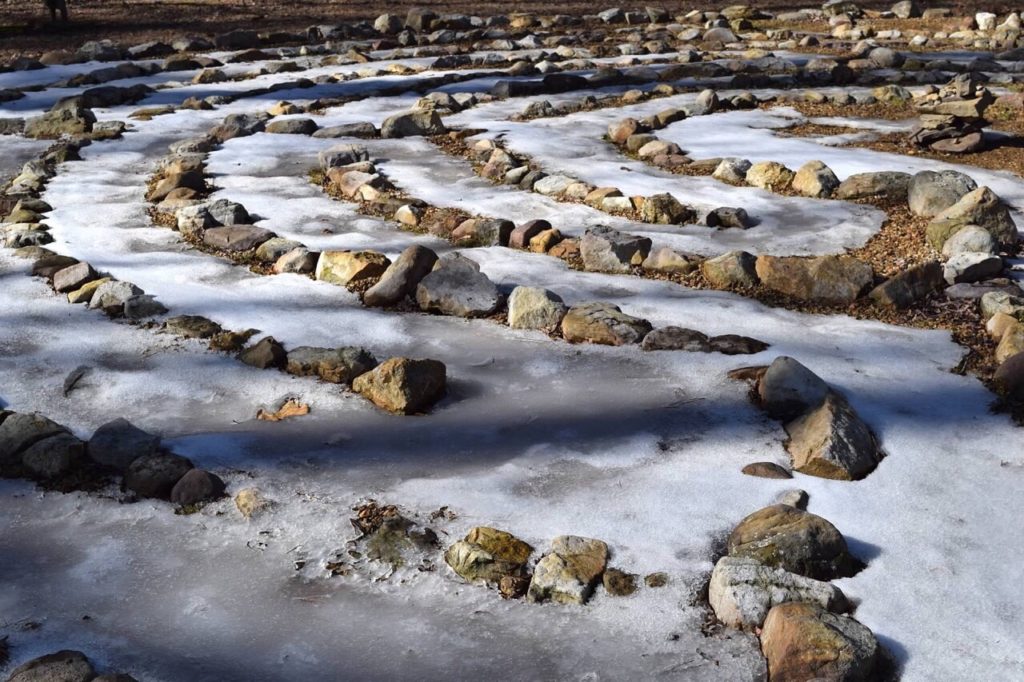
We recently walked a labyrinth for the first time after a deep personal loss, and it was a revelation. We were alone, except for our guide, as we walked. Having a knowledgeable guide beside us helped us to better understand some of what we were experiencing. If you can have such a person with you the first time you walk one, it’s probably a good idea.
Even though it’s not supposed to happen, we actually did get lost early on in our journey through the labyrinth, and it was a moment of deep insight and learning to understand how – and possibly why — we got stuck in that particular place.
The labyrinth we walked was outdoors, with grass pathways lined with pebbles, stones, flowering plants, and lavender. The grass was soft underfoot, and its thickness forced us to slow down.
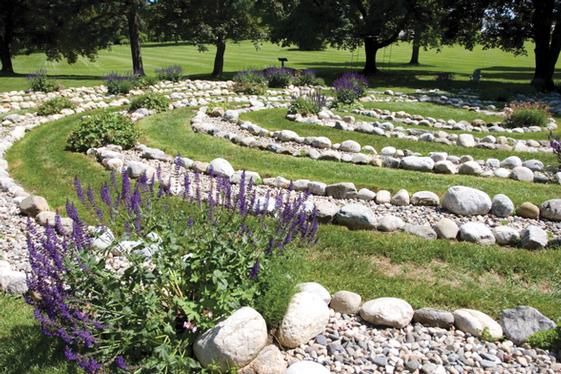
The labyrinth at Canyon Ranch, Lenox, Massachusetts
Sometimes we stopped and breathed deeply the fragrance of the lavender, which helped us stay present. Sometimes we held a stone, and reflected on a specific person, and placed it back on the path with a prayer for their well being.
Some people who had traveled the labyrinth before us had created small piles of stones, or patterns with stones and pebbles. Every person experiences a labyrinth in their own way. Some walk backwards, or sideways. Some dance or sing. Many cry. Some feel nothing. Most learn something they didn’t expect.
Our guide urged us to sometimes imagine that we were not walking alone, but instead were part of a long chain of beloved people in our lives who were walking together — or even dancing together.
We came away feeling unburdened. Refreshed. And deeply grounded.
If you want to try it, or if you have already made walking a labyrinth a part of your spiritual practice, and are looking for one near you, the Worldwide Labyrinth Locator has almost 5,000 entries in 80 countries.
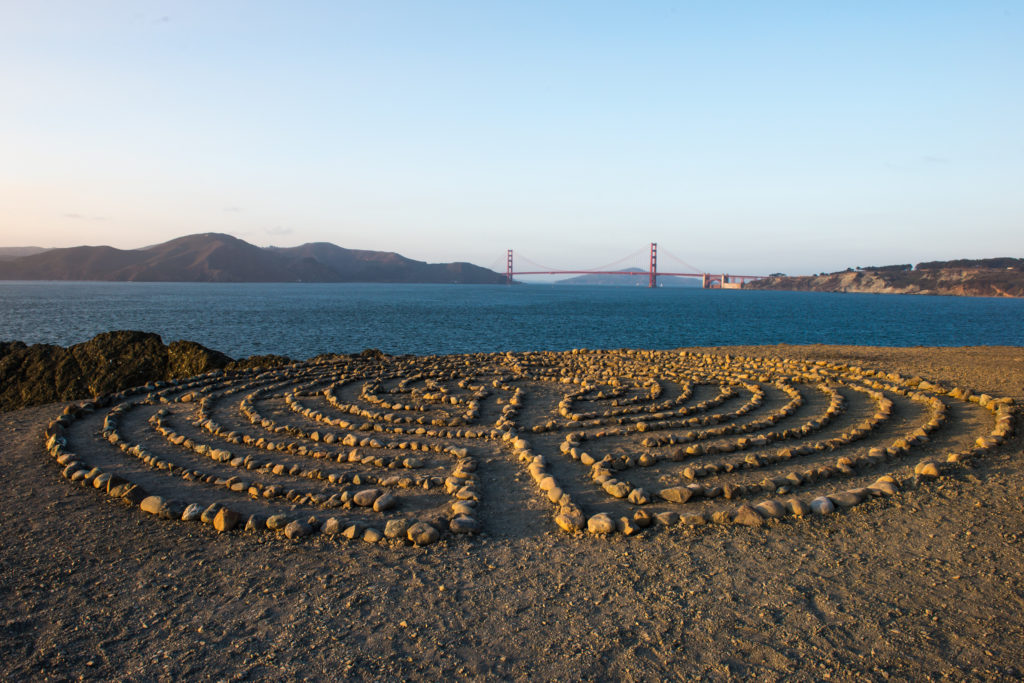
The labyrinth at Land’s End, San Francisco
Here’s our list of 10 labyrinths that we either love or really want to visit in our future travels – they’re some of the most magnificent in the world:
1. Chartres Cathedral in France. This relatively austere labyrinth with eleven concentric circles dates to the first decades of the 13th century and is the inspiration for — and the mother of — many other labyrinths around the world. Pilgrims have been coming to Chartres to walk its path for over 1,000 years. Its center is surrounded by a six-lobed rosette, which mirrors the cathedral’s great rose window. While it is partially covered by chairs during the week, the labyrinth is traditionally uncovered every Friday from 10 am to 5 pm from Lenten season (usually around end of February) to All Saints Day, the 1st of November.
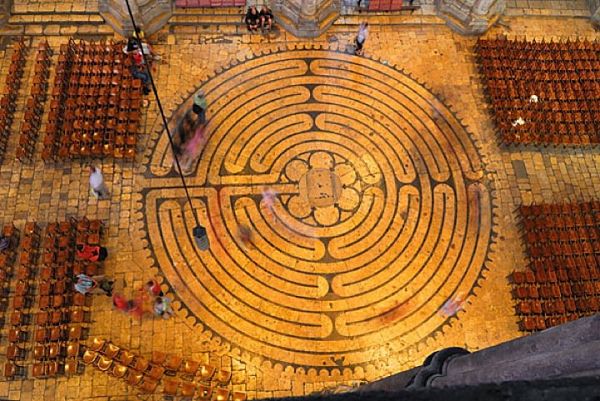
The labyrinth at the Cathedral at Chartres, France
2. The Golden Door Spa, Escondido, California. We’ve visited the Golden Door spa in Southern California several times, and the labyrinth is one of the highlights of this special Japanese-inspired retreat. The labyrinth is located down a long unpaved path from the main part of the spa, nestled in a glade under magnificent old-growth trees. By day or night, it’s a magical place. The spa’s tradition is that on the final night of your stay, you visit the labyrinth for a candlelight walk. In the center, there’s a fire in which each person burns a piece of paper on which is written something that they want to release from their lives or move beyond.
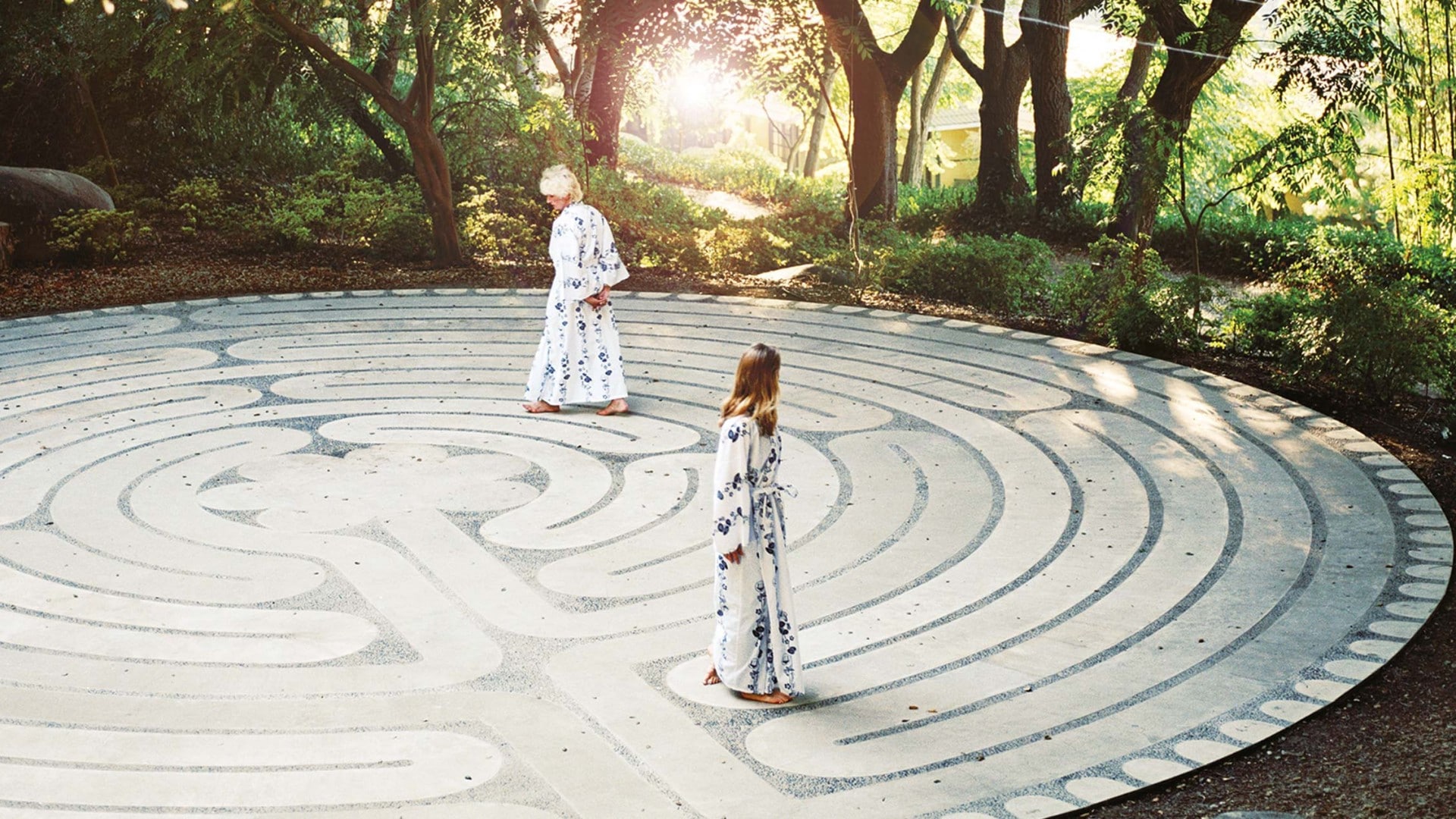
3. Land’s End, San Francisco. San Francisco artist Eduardo Aguilera created this labyrinth – a simple stone outline, following the classic seven-circuit Chartres labyrinth. On a dramatic outcropping with sweeping views of the Golden Gate Bridge, the Marin Headlands and the sea, the location is peaceful and majestic. You’ll be greeted by cormorants and oyster catchers, among other shore birds. The labyrinth is a bit hard to find, which is probably a good thing.
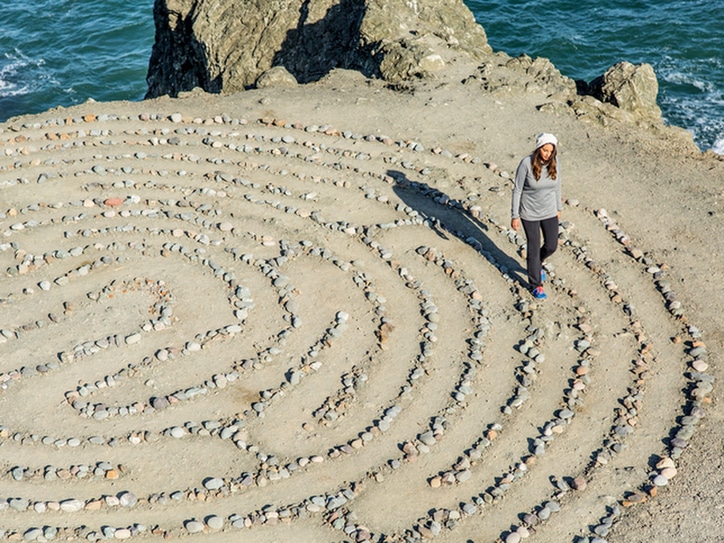
The labyrinth at Land’s End, San Francisco
4. Grace Cathedral in San Francisco is home to two labyrinths – one indoors, and one outdoors. The church’s indoor labyrinth is open during cathedral hours, and the outdoor labyrinth is open to visitors 24 hours a day, seven days a week. Additionally, a special candlelight labyrinth walk is held inside the cathedral each month. Usually, this event occurs from 6–8 p.m. on the second Friday of each month.
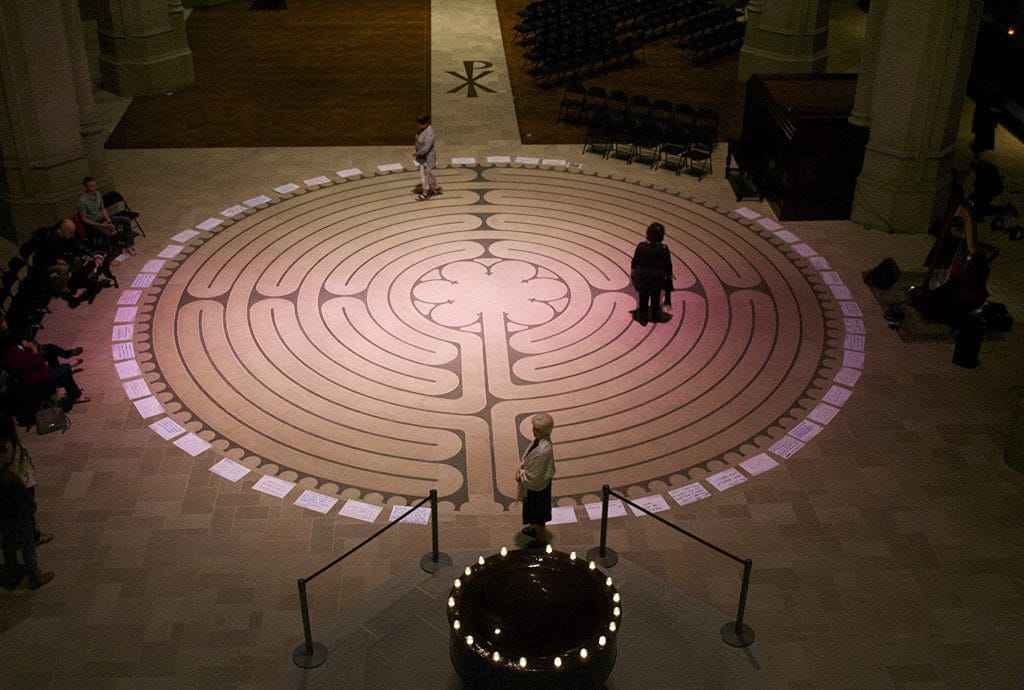
The labyrinth at Grace Cathedral, San Francisco
5. Dunure Castle, Scotland is located on a dramatic bluff by the sea on the Ayrshire coast, and it has an outdoor labyrinth in a stunning natural setting. While the labyrinth is relatively new – it was built just a decade ago on a small stretch of beach – the castle dates to medieval times, and was likely built during the 1200’s. The sound of the waves as you walk and meditate makes this a very special experience. Added benefit? Several episodes of the cable series Outlander have been filmed in the village and harbor nearby.

Dunure Castle, Scotland
6. The Edge, Hogsback, South Africa. The labyrinth at the 15-acre Edge Mountain Retreat is an eleven-circuit design, similar to the labyrinth at Chartres. It’s surrounded by cliffs, a gorge, and dramatic views of an indigenous untouched forest. The sky above is filled with swirling mists and cloud formations, making this an ideal place for reflection and re-connection with the natural world. In addition to the labyrinth, the property features gardens filled with azaleas, rhododendrons, beeches, birches, dogwoods, camellias and enormous oaks, along with a walled rose garden.
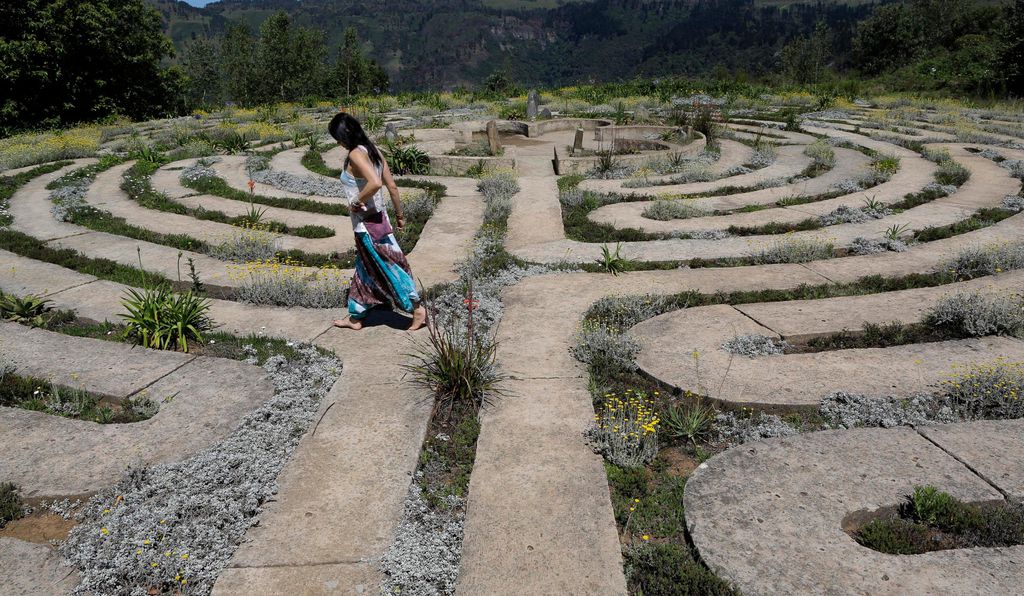
7. The Lotus Labyrinth at the Lodge at Woodloch. Designed by architect Katja Marquart, the recently-constructed labyrinth at this destination spa in the Poconos Mountains of Pennsylvania features a lotus flower at its entrance and exit, along with 9 circuits. It’s part of an overall wellness program at the spa, which sits on over 400 woodland acres and has a private 15-acre lake.
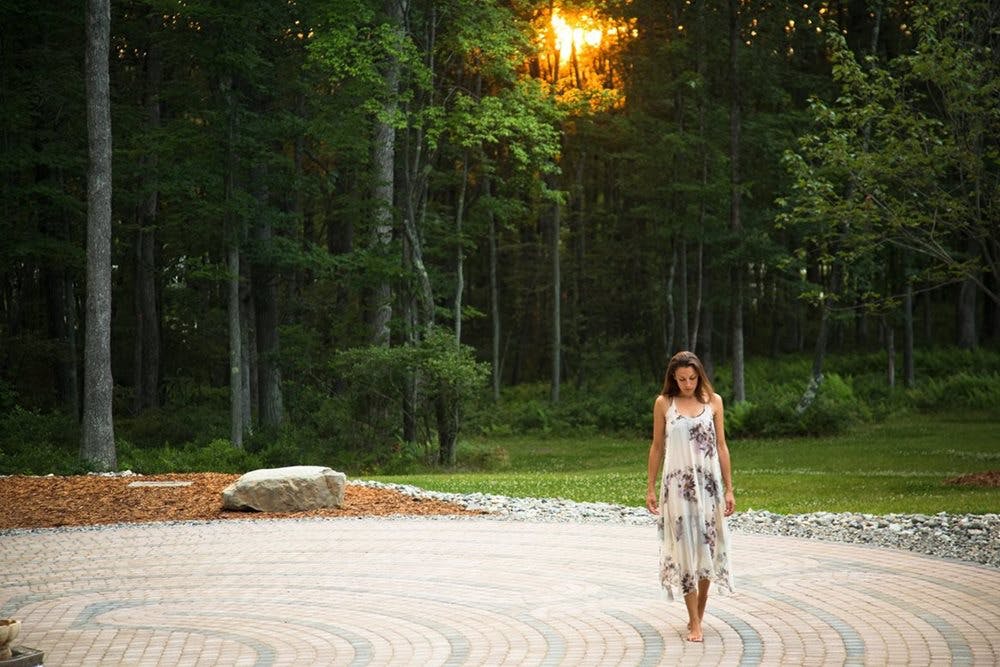
The Lotus Labyrinth at the Lodge at Woodloch
8. Peace Awareness Labyrinth and Gardens, Los Angeles. Centered on a quiet property in the heart of LA owned by a non-profit center dedicated to peace and spirituality, the labyrinth here employs the same design as the one in Chartres. It was built in 2001, and is available by appointment only. The adjacent Asian-themed meditation garden was opened a year later, and is home to sixteen water features, a koi pond and seating areas designed to foster reflection, repose, and meditation. A pergola and courtyard gardens offer additional areas to enjoy. Visitors are welcome to reflect in nature, “unwind the mind” and tour the beautiful historic villa on the property.
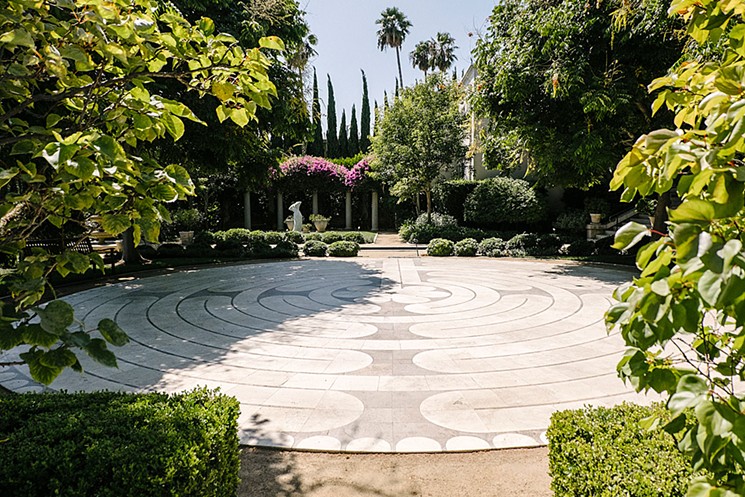
The Peace and Awareness Labyrinth and Garden, Los Angeles
9. Miraval in Tuscon, Arizona. This destination spa’s labyrinth is made of a simple stone spiral on the desert floor. It’s open to all guests during their stay as “a tool of walking meditation that provides a safe, serene environment to focus inward.”
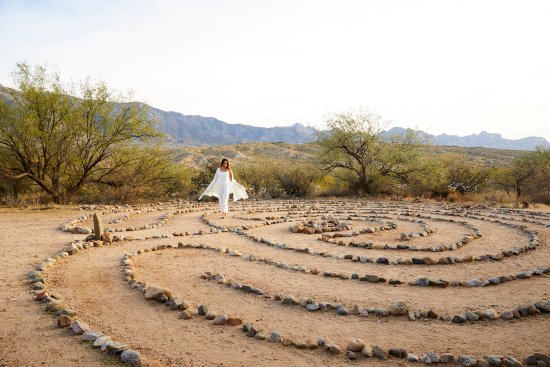
The labyrinth at Miraval Spa, Tuscon, Arizona
10. Canyon Ranch, Lenox, Massachusetts. The labyrinth here is available to all guests during daylight hours, and one can walk it alone, with a personal guide, or with a group. This was the first one we ever walked, and we highly recommend it.
T.S. Eliot gets the last word on why walking a labyrinth at least once in your life is a really good idea: “We shall not cease from exploration, and the end of all our exploring will be to arrive where we started, and know the place for the first time.”









